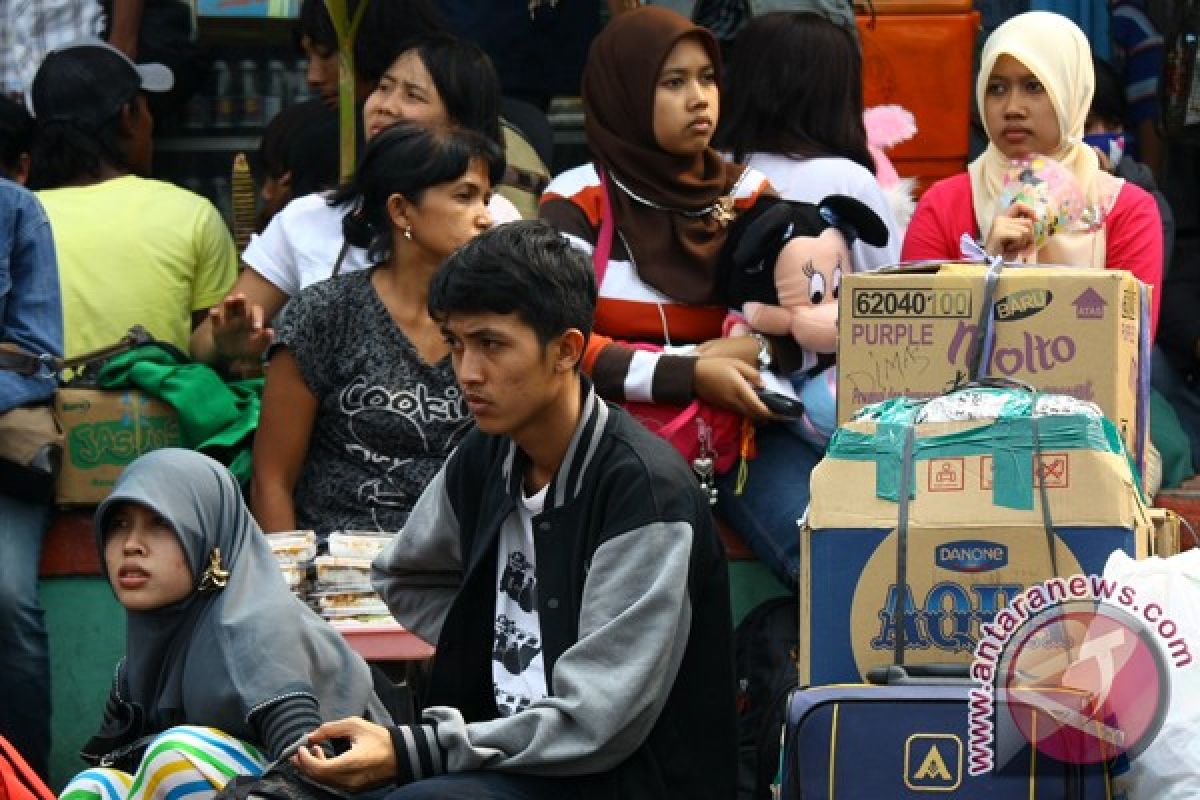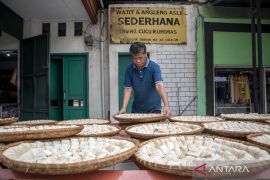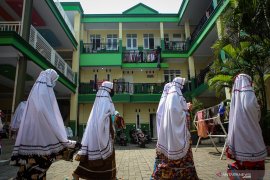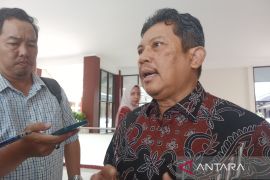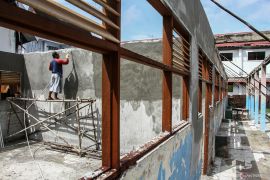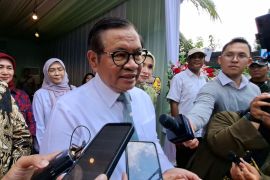We can overcome urbanization by bringing about prosperity in villages."Jakarta (ANTARA News) - The influx of new migrants seeking employment in cities usually gives rise to social problems if the existing infrastructure fails to cope with them.
Migrating to cities facing housing shortages will lead to an increase in slums and squatter settlements, with increased crime rate.
However, migration to urban areas is inevitable, as this issue had yet to be optimally addressed, according to Head of the Center for Population Research at the Indonesian Institute of Sciences (LIPI) Haning Romdiati.
"Urbanization is an old problem that always occurs, as the approach to handling this issue has not changed. Individually, it is difficult to prevent rural people from migrating to urban areas," Haning affirmed here on Thursday.
According to Haning, urban areas continue to attract villagers with low educational background to migrate and work in the informal sectors.
She affirmed that the home-going tradition during Eid al-Fitr or Lebaran holiday mass exodus by the people working in urban areas undeniably has an impact on the population if they bring along their relatives from villages while returning to the cities.
Haning pointed out that such a phenomenon usually occurs among people with low level of education who work in the informal sectors, but individuals with higher education and working in the formal sector do not generally follow this trend.
"It will become a problem if people with low educational background are unable to compete in the city and then become unemployed and live in slums," she added.
According to Haning, one approach to preventing rural people from migrating to cities is to narrow the gap between the urban and rural areas by prioritizing rural development.
In the meantime, Rural, Disadvantaged Regions and Transmigration Minister Marwan Jafar stated that developing the rural areas will have a similar effect as a candy that attracts ants, rather than preferring to live in urban areas.
In the June 2015 edition of Ayo ke Desa (Lets Go to Village) magazine, published by his ministrys Directorate General of Rural Area Development, Marwan noted that developed rural areas, supported by self-supporting villages, will be able to slow down the rate of urbanization.
"We can overcome urbanization by bringing about prosperity in villages. If the villages are already prosperous, then their citizens will not migrate to urban areas to live and work there," the rural, disadvantaged regions and transmigration minister affirmed.
He noted that the lack of growth opportunities in rural areas has compelled several of its inhabitants to leave their native villages to explore opportunities in urban areas.
Marwan pointed out that the stream of urbanization is similar to a double-edged sword that has negative impacts; firstly, the villages lose their best sons, as they move to the city to seek a better life; and secondly, urbanization leads to inequitable distribution of development between the urban and rural areas.
The United Nations in the 2014 World Urbanization Prospects report stated that more than half of the worlds population, or 52.1 percent, lived in urban areas in 2011.
This figure would continue to increase and was expected to reach 59.9 percent in 2030 and 67.2 percent in 2050.
In Asia, the UN estimated that half of the population would reside in urban areas by 2020. The UN further estimated that by 2025, about 60.3 percent of Indonesias population would live in urban areas.
A World Bank study in 2012 confirmed that most of Indonesias population, or 51 percent, lived in urban areas, a central trigger of which was ongoing urbanization.
The urbanization rate also revealed that Indonesia recorded the highest rapid growth as compared to other countries in Asia. This trend was expected to continue.
The World Bank has forecast that 68 percent of Indonesias population will live in urban areas by 2025. During the period between 1993 and 2007, the World Bank recorded an average annual urbanization rate of 4.2 percent in Indonesia.
The rapid pace of urbanization shows that the people also chose to live in urban areas. It also provides added economic value to the urban areas.
Urban development in Indonesia shows a structural transition, which has occurred due to its shift from a country that was initially dominated by an agricultural and rural economy to an urban economy driven by the manufacturing and service sectors.
The World Bank also noted that in 2010, approximately 74 percent of the gross domestic product was generated by urban areas.
In fact, todays urban agglomeration can be attributed to an increase in output and productivity.
The increasing concentration of the population as a result of urbanization is not only posing new challenges but is also facilitating the provision of primary care by the government, such as education and health.
Marwan further explained that the development of self-supporting villages is expected to mobilize the economy in rural areas and bring prosperity to its citizens.
Therefore, the minister affirmed that the development of self-supporting villages will serve as "sweets" that can attract the people to continue to reside and prosper in their villages rather than moving to towns and cities in search of jobs.
In a bid to develop more than 74 thousand villages across the country, the government has since April 2015 disbursed rural development funds to trigger a national movement for nationwide rural development.
The disbursement in April was part of the funds worth Rp20.7 trillion allocated from the state budget this year to offer a direct boost to rural economic growth, including support to small businesses in the villages.
Marwan remarked that in the future, his ministry will also prioritize development programs for 39 thousand disadvantaged villages and 17.2 thousand most disadvantaged villages.
(T.O001/INE//KR-BSR/A014)
Reporter: Otniel Tamindael
Editor: Priyambodo RH
Copyright © ANTARA 2015
